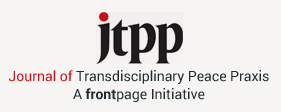Description
Online Buying Price: £ 10.95; INR 345; $ 17.95
The Unique Identification (UID)/ AADHAAR project has burst upon the nation with surprising ferocity. The government has started implementing AADHAAR-enabled direct cash transfers for 29 schemes in 51 districts, spread over 16 states and also plans to cover the entire nation by the end of December 2013. Yet, it is far from clear if AADHAAR is an undisruptive benevolent initiative of the government, seeking to empower the needy and maximise the outreach of social-security schemes. Legal experts, scholars and activists have discussed and deliberated on the AADHAAR scheme and the governmental logic underlying it. However, the torrential commentary against the UID scheme notwithstanding, the AADHAAR juggernaut is forging ahead.
Against this backdrop, this volume endeavours to engage with the politics and history of the state’s population identification exercises. In doing so, it goes beyond the specifics of the UID project to situate the issue in the broader context of identification technologies sponsored by the state and the market over time. Given the fact that there are writings on the UID project and its impact on the resident population but nothing on its impact on migrant population groups, this volume chooses to focus on the impact of the UID and similar identification technologies on migrants. The migrants may be a minority compared to the residents but, as individuals who remain mostly beyond the embrace of the state, they represent a limit on its penetration; they also remain at the metaphorical margins of the state’s will to encompass all. This volume therefore aspires to test the idea and impact of the UID at its limits — focussing on its impact on migrants — and interrogate if the reach of the state can after all exceed its grasp.
The significance of the volume is in the diverse range of reports and opinions it presents. Bringing together case studies across the length and breadth of India as well as theoretical engagements with the theme, the book urges the reader to think if the implementation of the UID project would after all only faithfully serve age-old statist imperatives of identifying, de-legitimising and expelling migrants from ‘national’ territory; whether the language of welfare of the UID project masks an anxiety for security, in this case the securitisation of an entire nation.





